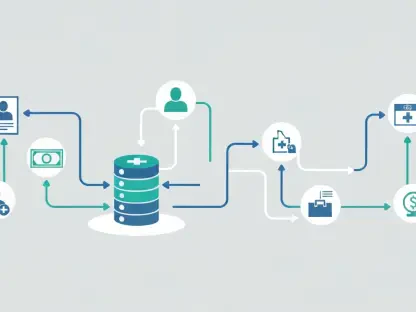In an era where remote work has become essential to the professional landscape, the use of employee monitoring applications (EMAs) is increasing. These applications, once considered a luxury, are now widely employed as companies address the management challenges of overseeing a decentralized workforce. EMAs offer the ability to track various employee activities, including keystrokes, emails, application usage, and even webcam footage. This capability marks a departure from traditional workplace surveillance methods and presents a new paradigm in performance management. Yet, as organizations adapt to this technological shift, they confront the critical issue of weighing productivity against employee privacy.
The Dual Nature of Monitoring Technologies
Privacy Concerns Amid Technological Advances
The advent of EMAs has sparked heated debates among stakeholders about privacy rights in the digital workspace. Employees often find themselves monitored without explicit consent or adequate notification, raising significant ethical questions. Many of these applications function discreetly and continuously, potentially capturing personal information beyond work-related activities. As EMAs become more sophisticated, incorporating features like video surveillance and keystroke logging, concerns about privacy violations intensify. The discreet nature of data collection exacerbates anxiety among employees, with potential adverse effects on morale and trust levels within organizations.
Recent investigations into the penetration of EMAs within Canadian provinces such as Ontario, British Columbia, and Québec provide insight into these privacy dilemmas. Surveys conducted in these regions indicate that while many managers perceive EMAs as indispensable tools for remote supervision, they acknowledge the unsettling invasion of privacy it represents. The dilemma lies in balancing corporate accountability and individual privacy rights, which continues to challenge both technological development and regulatory oversight. As these applications become entrenched in remote work culture, ensuring privacy without jeopardizing operational efficiency remains a complex endeavor for businesses.
Impact on Trust and Productivity
Employee trust is central to the effective functioning of any organization. However, the adoption of EMAs poses risks to this fundamental principle. Surveys have revealed that a significant proportion of managers acknowledge the detrimental impact of surveillance on employee trust and morale. Employee perceptions of constant surveillance can lead to a work environment that feels hostile and non-empathetic, ultimately affecting productivity. Despite the apprehensions, over half of surveyed companies continue to use EMAs, highlighting a preference for productivity gains despite the costs to employee relations.
The precise impact of EMAs on productivity is mixed and may differ across industries and roles. Trust-related concerns notwithstanding, some managers see these tools as enablers of efficient operations, especially when the workforce is dispersed across various locations. However, corporations choosing to use EMAs must tread a fine line, ensuring that employees feel both productive and respected. This precarious balance demands ongoing discussions about the boundaries of surveillance and calls for transparent engagement between employers and their workforce.
Navigating Legal and Ethical Boundaries
Evolving Legal Framework and Privacy Protection
As EMAs gain traction, there is an escalating demand for robust legal frameworks that adequately safeguard employee privacy. In regions such as Canada, where privacy laws vary between provinces, creating a cohesive legal framework remains a challenge. Recent legislative efforts, like the introduction of Bill 88 in Ontario, represent preliminary moves toward greater transparency in digital surveillance practices. Such laws mandate notification when monitoring occurs, yet critics argue that mere notification does not equate to adequate protection. Effective legislation should encompass not only transparency but also restrictions on data types and uses, thereby offering comprehensive employee protection.
Addressing the evolving legal landscape requires a multifaceted strategy that involves stakeholders across sectors. Employers, lawmakers, and privacy advocates must collaborate to develop regulations that adapt to the fast-paced changes in digital work environments. Given the emotional and productivity implications of surveillance, progressive legal solutions should integrate privacy by design methodologies, creating systems and policies that prioritize individual rights from inception. This proactive approach mitigates privacy invasion risks while maintaining the operational benefits of using EMAs.
Emphasizing Transparency and Ethical Usage
Employers have a responsibility to ensure that the deployment of EMAs aligns with ethical standards, promoting trust and professionalism in the workspace. Transparency is key; employees should be fully informed about the extent and purpose of monitoring activities. This includes clear communication about data handling practices and giving employees options to review and challenge data collected about them. Furthermore, companies are encouraged to limit monitoring to work-related activities and avoid out-of-hours surveillance, which blurs the boundary between professional and personal space.
For organizations to maintain competitiveness while respecting privacy, alternative performance evaluation methods must be explored. These may involve emphasizing outcomes, such as project completion and deliverables, rather than invasive input-focused metrics. By doing so, employers can foster an environment built on mutual respect and cooperation, thereby enhancing productivity without compromising ethical values. This approach not only benefits employees but also reflects positively on the company’s reputation and long-term success.
Future Considerations in Employee Monitoring
In today’s swiftly evolving professional world, remote work has become a key component of how businesses operate. As a result, employee monitoring applications (EMAs) are seeing an uptick in usage. Once seen as optional, these tools are now critical for companies wrestling with the complexities involved in managing a scattered workforce. EMAs enable firms to monitor a range of employee actions, such as logging keystrokes, tracking email correspondence, checking application usage, and even capturing webcam footage. This advanced functionality signals a shift away from traditional surveillance practices, creating a transformed landscape in performance management. However, as companies embrace this technological advancement, they grapple with the delicate balance between maximizing productivity and safeguarding employee privacy. The debate continues, underscoring the need for the ethical use of EMAs as organizations evaluate how to use these tools without infringing on personal boundaries.









